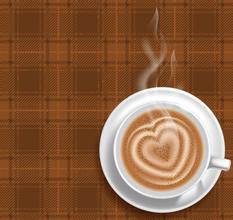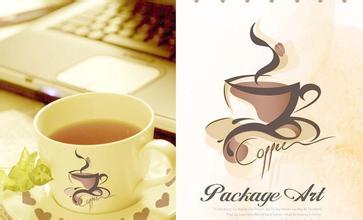Introduction to the characteristics of Panamanian Coffee Flavor Manor with medium Alcohol thickness
Panamanian land use: arable land accounts for 8.9%, permanent pastures account for 20.0%, forests and woodland account for 43.0%, others account for 28.1%; per capita arable land accounts for 0.6 acres. [2]
Panama is rich in mineral resources, but it is not exploited much, and the scale of the mine is small. The main minerals are gold, silver, copper, iron, mercury, bauxite, manganese, salt, oil and so on. The reserves of copper, salt and bauxite are relatively large. As of 2013, Panama has more than 200 million tons of copper ore, ranking fourth in the world. The proven copper reserves can be mined for 50 years. [5]
Panama is rich in forest resources and has many tree species, including mahogany, cedar, teak, mahogany, cedar and other valuable wood. The forest area of Dalian Province in the east is the most widely distributed, but it is not sufficient due to the lack of market and for reasons such as national defense and protection of the natural ecological environment.
The Panamanian flag was launched on November 3, 1904. The flag is rectangular and the ratio of length to width is 3:2. The flag consists of four rectangles of white, red and blue. White symbolizes peace; red and blue represent the former Panamanian Liberal Party and the Conservative Party respectively, and they are also symbols of the two parties' United struggle for the interests of the nation. The blue star on the white background at the top left represents loyalty and integrity, while the red star on the white background at the lower right represents the authority of the law. The design of the crosshairs divided into four pieces represents that Panama is located at the junction of South America, North America, Atlantic and Pacific Ocean. Red, blue and white are the colors of the American Stars and Stripes that support the independence of Panama. The flag was designed by Manuel Amador Guerrero, the first president of Panama. [6]
The national emblem of Panama was launched in 1904 by a brown eagle with its head held high and its wings spread.
It stands on the national emblem with a white ribbon with the Panamanian motto "for the benefit of the world". In the middle of the national emblem is the brown isthmus of Panama, the blue Pacific and Caribbean seas, and the Panama Canal that connects them; under the blue sky, a bright moon has risen, the corresponding sunset is still shining in all directions, symbolizing the arrival of Panama's independence "at sunset and moonrise"; the silver sword and rifle crossed on the upper left have experienced the ups and downs of hundreds of years of war on Panamanian land. The T-pick and shovel on the upper right represent the country's call for active construction and hard work; the sheep's horn overflowing with gold coins and the golden two-winged flywheel symbolize the progress and prosperity of the country. Four national flags are decorated around the national emblem, and the top nine golden five-pointed stars represent the nine provinces of Panama (flowers, sweet oranges, pineapples, pineapples, vanilla, lively fragrance). Beans are used by many contestants in Panama.
Hartman's story, like his coffee, is legendary. Hartman Manor is located in Chilidge, Santa Clara. The founder's name is Eloise Strauss Hartman. He was born on June 20, 1891 in the Moravilla region of Austria and Hungary in what is now the Czech Republic, and died on May 25, 1970 at the age of 78. Today's Hartman Manor is a family business founded by Latip Hartman (son of Eloise) in 1940. In 1966 Latip married Dinola Sandy of Costa Rica. They have five sons, Latipa Jr., Alan, Alexander, Alice and Kelly. Each family member is responsible for the growth management, harvesting and handling of the coffee and the visit to the manor. A family estate that has grown coffee for more than 100 years is a legend in itself.
The family business has a state cup testing laboratory and a sample baking room. Rigorous cup test of each batch of coffee fruit. This ensures that the coffee quality at Hartman Manor is stable and is always looking for progress. Their scientific attitude towards coffee and nearly 100 years of family experience ensure their excellent production.
Panama Panama
Manor: Lerlda Estate Lot10, lot 10 of Lilida
Treatment method: White honey treated Honey
Variety: Kaduai Catuai
Score and cup test CuppingScore:87
Lime,floral coconut,clean,sparkling,mediumbody
Small lime, coconut flowers, clean, lively acid, medium mellow thickness "
The unique treatment of Colombian red wine
Columbia Colombia
Manor: Nubia NUBIA, ANATOLI3-
Important Notice :
前街咖啡 FrontStreet Coffee has moved to new addredd:
FrontStreet Coffee Address: 315,Donghua East Road,GuangZhou
Tel:020 38364473
- Prev

Fragrant and full-bodied coffee flavor and taste in Kenya Jinchu Valley manor area characteristics of high-quality coffee beans
In 2011, the number and enrollment of Ken primary and secondary schools were 28567, 7297, 9.86 million and 1.77 million respectively. The teacher-student ratio in primary and secondary schools is 1:31 and 1:57 respectively. There are 198000 students in the university. Eight years of free primary education has been implemented since January 2003. In 2006, the adult literacy rate was 84.3%. [5] institutions of higher learning include Nairobi University, Moi University, Kenyatta University, and Egg.
- Next

Introduction to the characteristics of Manor Manor with rich taste and mellow taste of Indonesian Manning Coffee
The full name is the people's Congress. The national legislature exercises the general legislative power except drafting and amending the Constitution and formulating the major policies of the state. Congress does not have the power to remove the president from office, nor can the president announce the dissolution of Congress; but if the president violates the constitution or the resolution of the people's association, Congress has the power to recommend that the association pursue the president's responsibility. There are a total of 500 members, all of whom are also members of the people's Association. The term of office is five years. Of which 462
Related
- Detailed explanation of Jadeite planting Land in Panamanian Jadeite Manor introduction to the grading system of Jadeite competitive bidding, Red bid, Green bid and Rose Summer
- Story of Coffee planting in Brenka region of Costa Rica Stonehenge Manor anaerobic heavy honey treatment of flavor mouth
- What's on the barrel of Blue Mountain Coffee beans?
- Can American coffee also pull flowers? How to use hot American style to pull out a good-looking pattern?
- Can you make a cold extract with coffee beans? What is the right proportion for cold-extracted coffee formula?
- Indonesian PWN Gold Mandrine Coffee Origin Features Flavor How to Chong? Mandolin coffee is American.
- A brief introduction to the flavor characteristics of Brazilian yellow bourbon coffee beans
- What is the effect of different water quality on the flavor of cold-extracted coffee? What kind of water is best for brewing coffee?
- Why do you think of Rose Summer whenever you mention Panamanian coffee?
- Introduction to the characteristics of authentic blue mountain coffee bean producing areas? What is the CIB Coffee Authority in Jamaica?

